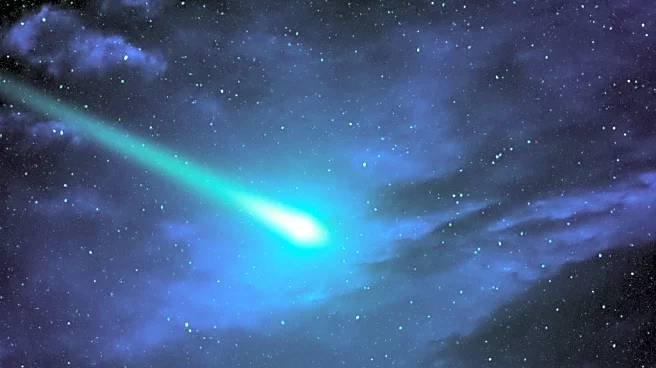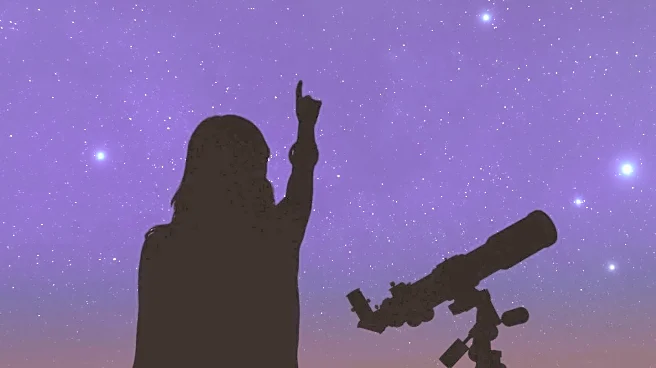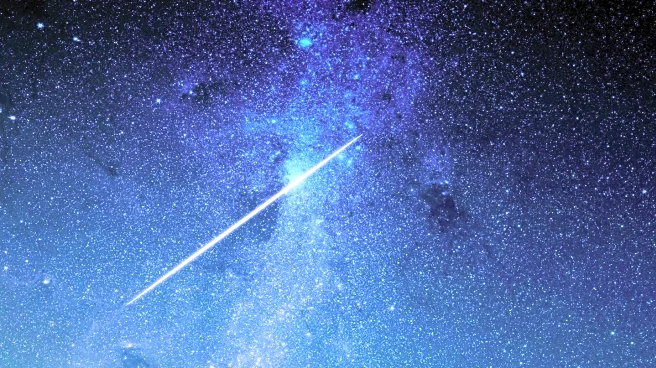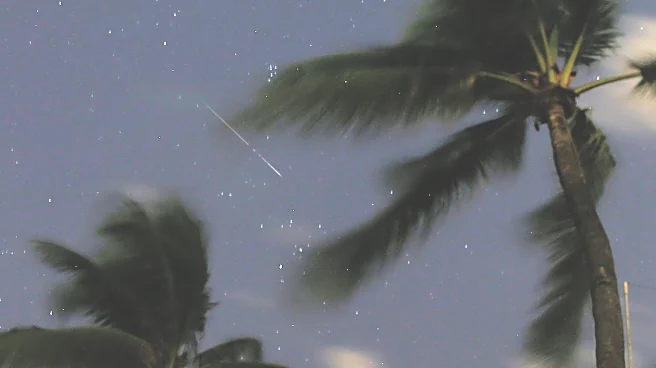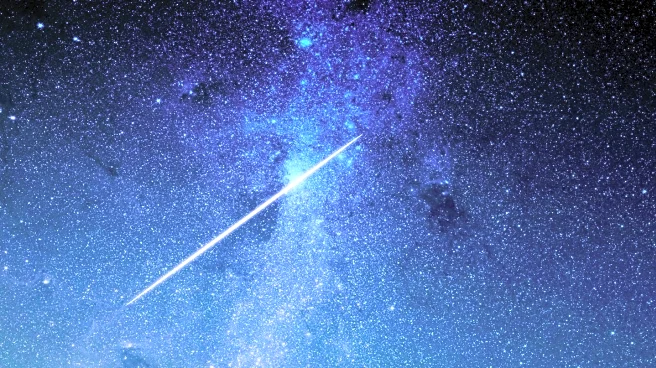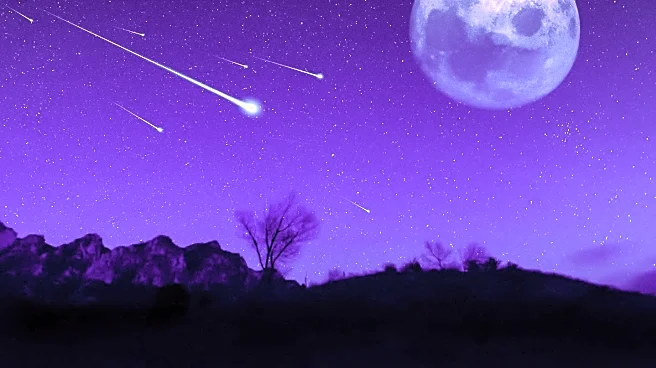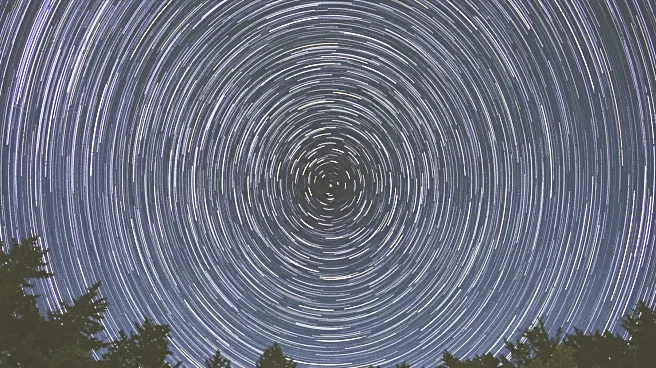What's Happening?
The Perseid meteor shower is set to peak tonight, offering a spectacular celestial display for stargazers. Known for producing bright meteors with long streaks, the Perseids are caused by Earth passing through debris trails left by Comet Swift-Tuttle. The shower is active annually from mid-July to late August, with the peak providing the best viewing opportunity. Observers are advised to find dark locations away from city lights and allow time for their eyes to adjust to the darkness. Despite the moon's brightness potentially reducing visibility, viewers can expect to see around 10 to 20 meteors per hour.
Why It's Important?
Meteor showers like the Perseids offer unique opportunities for public engagement with astronomy and science. They draw attention to the natural wonders of the universe and encourage interest in space exploration and research. The event is significant for educational institutions and science communicators, who use it to promote awareness and understanding of astronomical phenomena. Additionally, such events can boost local tourism in areas known for clear skies and optimal viewing conditions, benefiting local economies.
What's Next?
Following the Perseid meteor shower, several other meteor showers are anticipated throughout the year, including the Draconids, Orionids, and Geminids. These events provide ongoing opportunities for stargazing and scientific observation. As interest in astronomy grows, educational programs and community events may increase, fostering greater public involvement in space science. The continued study of meteor showers contributes to our understanding of cometary debris and its impact on Earth's atmosphere.
